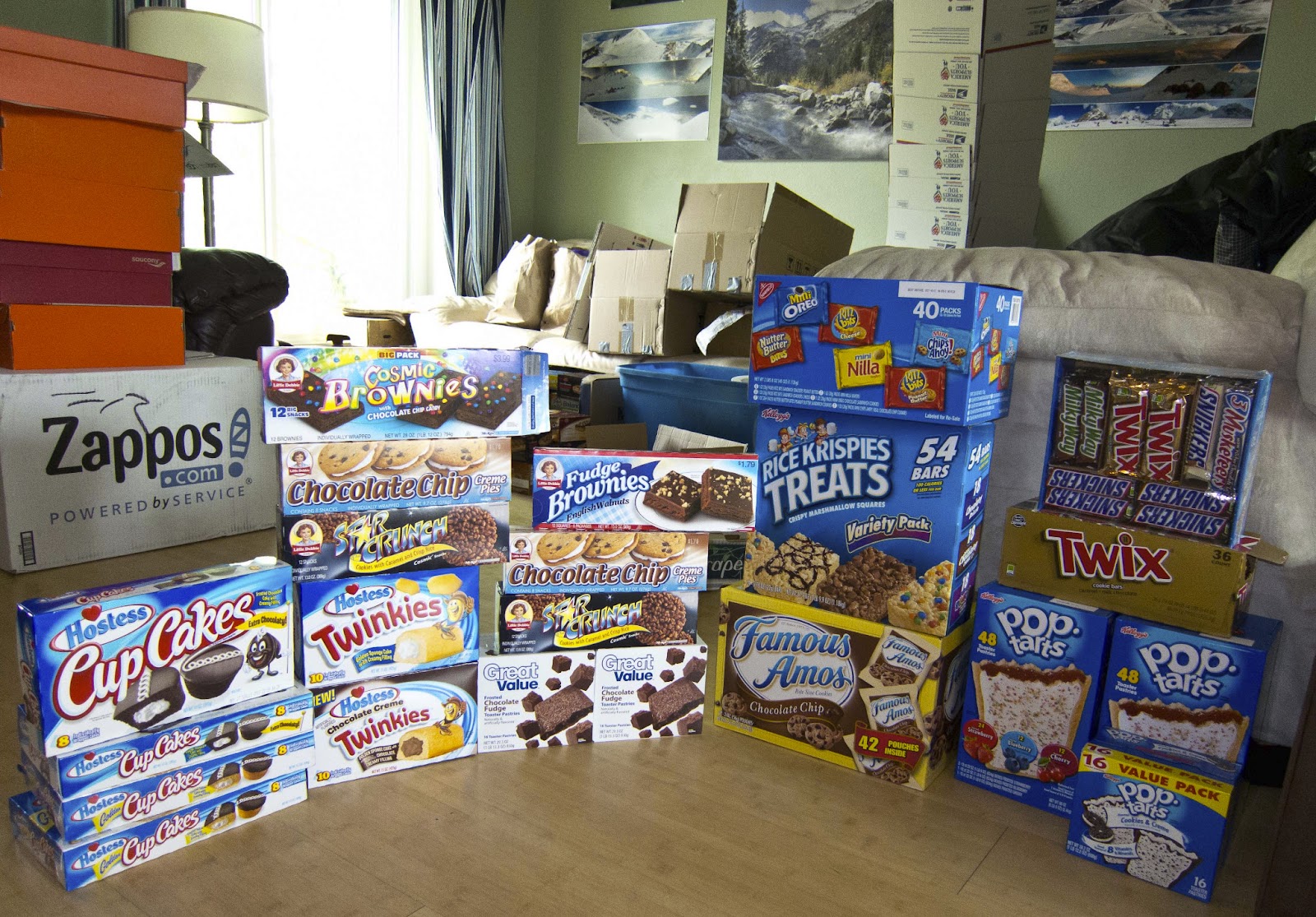Logistics:
 |
| The glorious snack attack. |
Planning is an essential part of any thru-hike. The ease of planing highly depends on ones experience with backpacking/camping/outdoor as well as if they have undertaken another thru-hike before. If one is a complete novice, it reasons that they will need to do more planning and research to feel comfortable with what they are about to undertake. Thankfully, there is a large PCT community to ask advice from as well as a great deal of helpful books and websites.
A few sites and books I've used and would recommend are: Yogi's Guidebooks (great for all around knowledge and info on towns), Craig's PCT Planner (an amazing resource that will 'plan' your hike, giving you a rough schedule and resupply points), Postholer.com (PCT map overlay on Google maps, snow reports and more), Halfmile's PCT Maps (free maps to print and for GPS of the trail with water and other points - they rock!), AsABat's Water Reports (AsABat, the person who made these possible died this year, so they may not be updated, and thus useful for 2013 and on), Pacific Crest Trail Association (for hiking permits, guidebooks, and trail conditions), the PCT Data Book (mileage and water sources) and the PCT-L (a PCT community mailing list where you can ask questions/advice and get all sorts of PCT info - some good, some bad).
 |
| 2 months of dinners. |
For a normal 4-5 month thru-hike, logistics may seem to be overwhelming. At face value it is overwhelming, however, one must remember that life on trail is much, much simpler than a normal day at home. When you're on trail, the primal things of life take the forefront - food, water, shelter and how far you'll go. Most folks use the resupply strategy of shopping in stores along the trail and supplementing resupply towns with minimal facilities with pre-mailed food boxes aka 'mail drops'. Water is where you find it. In dry southern California it takes a little bit of planning from spring to spring, but once one hits the Sierras, water is a minor concern. Shelter...you should have this with you at all times! Distance - you'll go as far as you feel like or need to so you don't run out of food, don't stress it too much. For the most part, if something goes wrong one has the leeway of time - taking however long it is necessary to fix the problem.
The logistics of my speed record attempt were vastly more structured and detailed than a typical thru-hike. Because time is the ultimate commodity on as speed hike, the leeway of taking days off to rest or fix problems does not exist, especially when trying to set a new record. This fact imparted the special need to plan EVERYTHING and to try and prepare for any possible problems. Of course, you can't plan for the unplanned and problems and situations occur that one can never imagine, so a degree of flexibility is needed in combination with a strict schedule. It took well over a month to fully prepare the logistics for my trip, from calculating how many calories a day I wanted to consume vs weight carried, to how long between resupplies, to where will I take showers and do laundry, to how many batteries do I need for my GPS? Each aspect of planning was ruled by the overlying theme of time efficiency and saving weight.
 |
| The living room full of 2 months of food! Packing mail drops. |
One doesn't truly comprehend how much food is consumed in 2 months until it is piled up in their living room. I opted to resupply from mail drops for my entire hike, thus removing 'shopping' time. I scheduled each resupply/town stop for 3 hours, usually taking only 2. In all I had planned 14 resupply points, each with a box specifically tailored for the next section. At the time of making the boxes it was a nightmare, but when on trail the boxes were perfect and all the work payed off handsomely. The real effort is in the details.
Distance on paper is just that, a number. When that number is translated into real miles, it's both an amazing thing and a horrible thing. One of the hardest things across my hike was the fact that I knew I had to make about 42+ miles a day, everyday for 60 days. If you didn't make the miles one day, you were behind overall and had to make them up another. Each morning I'd awaken at 0 miles and throughout the day be nagged by a constant 'deadline-like' stress because I knew how many more miles I needed to go. The first 10 miles always seemed alright, the middle 20 were always the hardest and the last 10+ were either easy or hard depending on the day. Sometimes the last 5 were absolute hell, since I had to keep going regardless of what my body and mind wanted...gotta make the miles. Because of the constant stress and need to make big miles, the hike itself became work and not fun. I knew this would happen, but just like the distance on paper, you can never fully imagine how it will be until it is happening.
Overall the predetermined schedule I made sitting all cozy in my home was just about right. In fact, I was ahead of my schedule when I got off trail, something I'm still surprised I was able to do!
 |
| About 10 miles from Sonora Pass hwy crossing, just entering the volcanic terrain from the Granite of the Sierra's. |